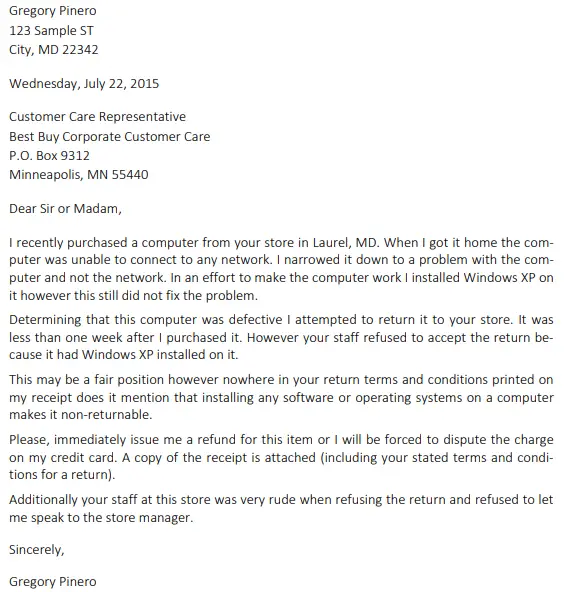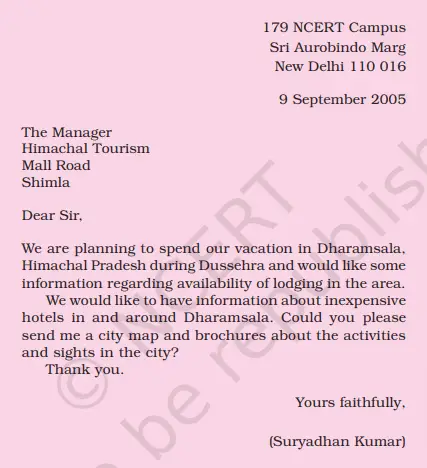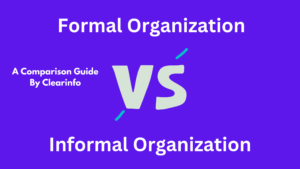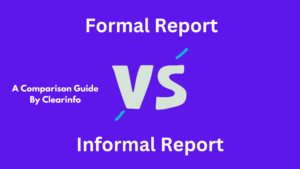Distinguishing between formal and informal letters is vital for effective communication in diverse scenarios. Whether you’re drafting a professional document or engaging in personal correspondence, understanding the contrasting features of these letter types is crucial.
This article unveils the unique qualities that shape formal and informal letters, helping you with the knowledge to adapt your writing style accordingly.
What are formal and informal letters?
Formal letter:
A formal letter is a professional and structured form of written communication commonly used in official, business, and professional contexts. It follows specific guidelines to maintain a formal tone and language. Formal letters are used for purposes like job applications, business correspondence, legal issues, and even for order letters, where individuals or organizations place specific requests for products in a formal manner.
They stick to a structured format, use formal greetings and salutations, avoid abbreviations, and follow a clear introduction, body, and conclusion. Formal letters often require documentation, end with a formal closing, and are signed by the sender.
Informal letter:
An informal letter is a personal means of communication exchanged among friends, acquaintances, or personal connections. It has a casual and relaxed tone, allowing the writer to express thoughts, feelings, and experiences in a friendly and conversational manner.
There are no strict formatting rules or structure, giving the writer the freedom to personalize the letter. Informal letters begin with a warm greeting, delve into various topics in the body, and use personal language, including slang and idioms. They typically end with a closing phrase or signature. Informal letters foster intimacy and connection between individuals.
Comparison table for formal Vs informal letters
Aspect of differentiation Formal Letters Informal Letters Tone and language Professional, formal tone and language Conversational, relaxed tone and language Structure and formatting Follows a standard format and structure Flexible structure, no strict formatting requirements Audience and purpose Directed towards formal entities and for professional use Directed towards friends, family, and informal relationships Use of greetings and salutations Formal greetings and salutations Casual and personalized greetings and salutations Length and level of detail Concise, focused on specific information More flexible, can be shorter or longer, with personal details Use of contractions and abbreviations Avoids contractions and abbreviations Allows for contractions and informal abbreviations Proofreading and editing conventions Careful proofreading and editing for accuracy and professionalism Less strict, but still important for clarity and coherence Use of formal or informal sentence structures Follows formal sentence structures with grammatical correctness More flexible, including fragments and colloquial expressions Cultural and contextual considerations Adheres to cultural norms and avoids sensitive or offensive topics Considers cultural differences, but may be more relaxed Documentation and references Requires proper citations and referencing when applicable Not typically required, focus on personal experiences and opinions
Features of formal and informal letter writing
Features of formal letter
- Salutation: Formal letters start with a respectful salutation, such as “Dear Mr./Mrs./Ms.” followed by the recipient’s last name and appropriate title.
- Introduction: The introductory paragraph of a formal letter serves to establish the purpose of the letter and provide context.
- Body: The body of a formal letter contains the main content and is divided into clear and concise paragraphs.
- Language and Style: Formal letters employ formal language and adhere to grammatical rules and conventions.
- Respectful and Polite Language: Formal letters maintain a tone of respect and politeness throughout the communication.
- Enclosures and Attachments: If there are any additional documents or attachments accompanying the letter, formal letters mention them by stating “Enclosure” or “Attachment” followed by a list of the included items.
Features of informal letter writing
- Salutation: Informal letters often begin with a casual salutation, such as “Dear [Recipient’s Name],” “Hey,” “Hi,” or even a personal nickname.
- Personal Introduction: The introductory paragraph of an informal letter sets a warm and personal tone.
- Narrative Style: Informal letters often include storytelling elements, anecdotes, and personal experiences.
- Casual Tone: Informal letters adopt a relaxed and conversational tone, creating a friendly atmosphere between the writer and the recipient.
- Paragraphs and Organization: While informal letters don’t follow a rigid structure, they are still organized into paragraphs.
10 Main differences between formal and informal letters (Detailed explanation)
1/ Tone and language:
Formal Letters: Formal letters require a professional tone and language. They are typically used in business, academic, and official settings. The tone should be respectful and courteous, maintaining a sense of professionalism throughout. Language should be formal, using standard grammar and avoiding slang or colloquial expressions. The goal is to convey information clearly and professionally.
Informal Letters: In contrast, informal letters have a more conversational tone. They are typically used when writing to friends, family members, or acquaintances. The language used can be more relaxed and casual, allowing for personal expressions and informal phrases. Slang, abbreviations, and contractions are commonly used to create a friendly and relaxed atmosphere.
2/ Structure and formatting:
Formal Letters: Formal letters follow a standard format to maintain professionalism and clarity. They typically include the sender’s and recipient’s addresses, dates, subject lines, and a formal salutation. The letter’s body is structured into paragraphs, with each paragraph dedicated to addressing a specific point. A formal closing phrase is used, followed by the sender’s signature and printed name. The structure ensures a logical flow of information and makes it easier for the recipient to navigate the content.
Informal Letters: Informal letters possess a flexible structure in contrast to formal letters. While there is no strict format, they usually consist of an introduction, body, and conclusion. The structure can be less formal and more relaxed, allowing for a free-flowing conversation-like style. Informal letters may not include addresses, subject lines, or formal salutations. The closing can be more casual and personalized, depending on the relationship with the recipient. The purpose is to convey thoughts and feelings in a less structured manner.
3/ Audience and purpose:
Formal Letters: Formal letters are typically written for professional or official purposes. They are directed towards individuals or organizations with whom you have a formal or business relationship. The audience for formal letters includes employers, colleagues, government officials, academic institutions, or other formal entities. The purpose of formal letters can vary widely, such as applying for a job, making a complaint, requesting information, or submitting official documents. The tone and language used in formal letters are tailored to maintain professionalism and respect.
Informal Letters: Informal letters are usually intended for personal connections, including family members, or acquaintances. The audience consists of individuals with whom you share a more casual and informal relationship. The purpose of informal letters is often to catch up, share personal news, express emotions, or simply engage in friendly conversation. Informal letters provide the opportunity to showcase your personal voice and connect on a more personal level.
4/ Use of greetings and salutations:
Formal Letters: In formal letters, the use of greetings and salutations follows a more structured and respectful approach. Common formal greetings include “Dear Mr./Ms./Dr.” followed by the recipient’s last name. If the recipient’s gender is unknown, it is acceptable to use the full name without a title. For example, “Dear Alex Smith” or “Dear Jordan Taylor.” The salutation at the end of the letter is typically more formal, using phrases such as “Yours sincerely” or “Yours faithfully” followed by the sender’s full name.
Informal Letters: Informal letters allow for a more relaxed and casual approach to greetings and salutations. Depending on the relationship with the recipient, informal greetings can include variations like “Hi [Name],” “Hello [Name],” or even a simple “Hey.” For close friends or family members, more informal greetings like “Dear [Name],” “My dearest [Name],” or even using nicknames are common. The salutations in informal letters are more flexible and can range from casual phrases like “Best regards” or “Take care” to more personalized closings like “Love,” “Warmly,” or simply signing off with the sender’s first name.
5/ Length and level of detail:
Formal Letters: Formal letters generally require a more concise and to-the-point approach. They tend to be more structured and focused on conveying specific information or addressing a particular matter. The length of formal letters varies depending on the complexity of the subject but is typically kept within a reasonable limit. The level of detail provided in formal letters is sufficient to communicate the necessary information without excessive elaboration. Clarity and precision are prioritized in order to maintain professionalism and avoid ambiguity.
Informal Letters: In comparison, informal letters allow for greater flexibility in terms of length and level of detail. They can be shorter or longer, depending on the purpose and the depth of the conversation. Informal letters frequently incorporate personal experiences, facilitating a relaxed and informal writing style rather than formal writing. The level of detail can be more extensive, as the purpose of informal letters is often to share experiences, emotions, or thoughts in a more expressive and conversational manner.
6/ Use of contractions and abbreviations:
Formal Letters: In formal letters, the use of contractions (such as “don’t,” “can’t,” and “won’t“) and abbreviations should be avoided. The focus is on maintaining a professional and precise tone and using full words and phrases is preferred. This helps ensure clarity and avoids any potential confusion or misunderstandings.
Informal Letters: Informal letters allow for the use of contractions and abbreviations, as they contribute to a more casual and conversational style. Contractions like “don’t,” “can’t,” and “won’t” are commonly used, as well as abbreviations like “LOL” (laugh out loud), “BTW” (by the way), or “OMG” (oh my god). These informal language elements add a sense of familiarity and informality to the letter, reflecting a relaxed and friendly tone.
Valuable Tip: When deciding whether to use contractions and abbreviations, consider the level of formality desired in the letter and the nature of the relationship with the recipient.
7/ Proofreading and editing conventions:
Formal Letters: Formal letters require careful proofreading and editing to ensure accuracy, clarity, and professionalism. Reviewing the letter for spelling, grammar, and punctuation errors is essential. Attention should be given to the proper use of capitalization, consistent formatting, and adherence to formal writing conventions. Proofreading helps to eliminate any potential mistakes or ambiguities that may detract from the professionalism of the letter.
Informal Letters: While proofreading is still important in informal letters, the level of strictness may be more relaxed. Informal letters allow for a more conversational and casual style, and minor errors may be more forgivable. However, it is still advisable to review the letter for any glaring mistakes or miscommunications.
8/ Use of formal or informal sentence structures:
Formal Letters: In formal letters, the use of formal sentence structures is preferred. This includes using complete sentences with proper subject-verb agreement and clear, concise language. Formal sentence structures ensure clarity and professionalism in communication. Avoiding sentence fragments and run-on sentences helps maintain a formal tone and effectively conveys the intended message.
Informal Letters: In informal letters, sentence structures can be more flexible and varied. Informal writing allows for the use of conversational sentence structures, including fragments, colloquial expressions, and even the occasional use of incomplete sentences. Informal letters often mirror the natural flow of conversation and reflect a more relaxed and casual style.
9/ Cultural and contextual considerations:
Formal Letters: In formal letters, it is important to consider cultural and contextual norms. Different cultures may have specific expectations regarding language, etiquette, and formality in written communication. Understanding and respecting these cultural nuances is crucial to ensure effective communication and avoid any unintentional misunderstandings or offenses.
Informal Letters: In informal letters, cultural and contextual considerations are still relevant, but they may have less impact compared to formal letters. The level of formality and cultural nuances can vary depending on the nature of the relationship and the familiarity between the sender and recipient.
10/ Documentation and references (e.g., citations, footnotes):
Formal Letters: In formal letters, especially those related to academic or professional contexts, it may be necessary to include documentation and references to support claims or provide additional information. This includes citing external sources, referring to relevant research or literature, and providing proper attribution when using someone else’s work or ideas. Additionally, depending on the field or organization’s requirements, formal letters often follow specific citation styles, such as APA (American Psychological Association) or MLA (Modern Language Association).
Informal Letters: In informal letters, the need for formal documentation and references is generally less common. Informal letters tend to focus more on personal experiences, opinions, and casual conversations rather than citing external sources. While informal letters may still reference shared experiences or previous conversations, the need for formal citation styles or footnotes is typically unnecessary.
Examples of Formal and Informal letters
Example of a formal letter

The above-written letter is a sample of a real formal letter written in a well-structured format for product purchase returns. The purpose of the above letter is to inform the seller about the product failure.
Example of an Informal letter

The above-written letter is a sample of an informal letter written for the purpose of gathering information from the recipient.
Similarities between formal and informal letters
Although formal and informal letters have several differences, there are also some similarities between the two types:
Common Ground between Formal and Informal Letters:
1/ Use of written communication: Both formal and informal letters rely on written communication as a means of conveying messages and information.
2/ Structure: Both types of letters generally follow a similar basic structure, consisting of an introduction, body, and conclusion.
3/ Addressing the recipient: Both formal and informal letters address the recipient directly, establishing a sense of personal connection.
4/ Clear communication: Both types of letters aim to clearly communicate thoughts, ideas, or requests to the recipient.
5/ Importance of proofreading: Both formal and informal letters benefit from proofreading and editing to ensure clarity, correctness, and professionalism.
6/ Attention to grammar and spelling: Both formal and informal letters require attention to proper grammar, punctuation, and spelling to maintain clarity and professionalism.
7/ Signature: Both types of letters typically include a handwritten or digital signature to provide a personal touch.
What are the benefits of each letter?
Benefits of formal letters
- Clarity and Precision: Formal letters help in providing clear instructions, making formal requests, or submitting official documents, ensuring that the message is conveyed accurately.
- Documentation: Formal letters serve as important documentation in various contexts which is not possible in using the style of oral communication. They establish a written record of communication that can be referenced later for clarity and legal purposes.
- Professional Opportunities: Formal letters, such as cover letters and job applications, play a crucial role in presenting qualifications, experiences, and skills to potential employers.
Benefits of informal letters
- Informal Networking: Informal letters can also contribute to informal networking by establishing connections and social circles.
- Expression of Emotions: Informal letters provide a platform to express emotions, share experiences, and convey personal thoughts. They enable individuals to freely express themselves, providing an outlet for self-reflection and emotional release.
- Flexibility and Creativity: Informal letters offer flexibility in terms of structure, language, and content.
When should we use each type of letter?
The usage of formal and informal letters may vary based on cultural norms, specific contexts, and individual preferences. Following are a few verticals where each type of letter is used.
When to Use Formal Letters:
- Business correspondence (e.g., job applications, cover letters, resignation letters)
- Professional inquiries and requests
- Complaints or disputes with a formal institution or authority
- Formal invitations or announcements
- Official letters to government agencies or officials
- Academic or research-related communication
- Legal or contractual matters
- Formal letters of recommendation or reference
When to Use Informal Letters:
- Personal correspondence with friends, family, or acquaintances
- Casual invitations or social event planning
- Thank-you notes or letters of appreciation
- Catching up with someone or sharing personal news
- Congratulatory or celebratory messages
- Casual requests for information or favors
- Sharing personal anecdotes or stories
- Informal letters of recommendation or reference for non-professional contexts
Difference between informal and semi-formal letters
When it comes to letter writing, understanding the differences between informal and semi-formal letters is also crucial. Let’s explore this further by comparing 10 key differences between informal and semi-formal letters in the table below.
Informal Letters Semi-Formal Letters Casual and relaxed tone Polite and slightly formal tone Personal language and expressions More formal language, avoiding slang Conversational style Balanced mix of conversational and formal style Casual greetings, e.g., "Hey" or "Hi" Respectful salutations, using titles Narrative and storytelling elements Focused and concise content Use of personal anecdotes and experiences Professional and relevant information Abbreviations, contractions, and slang Limited use of abbreviations and contractions Flexible structure with informal organization Clear and structured paragraphs
Difference between formal, informal, and personal letters
Formal Letters | Informal Letters | Personal Letters |
Polite and professional tone | Casual and relaxed tone | Intimate and heartfelt tone |
Follows a structured format | No strict formatting rules | No strict formatting rules |
Formal language and vocabulary | Informal language, including slang | Personal and authentic language |
Respectful salutations and titles | Casual and friendly salutations | Personalized and endearing salutations |
Conveys official or business matters | Conversational style and personal topics | Emotionally expressive and personal content |
Addresses recipients professionally | Addresses recipients informally | Addresses recipients personally |
Facts, evidence, and logical arguments | Personal anecdotes and experiences | Sharing personal experiences and emotions |
Strict adherence to grammar and syntax | May use abbreviations and contractions | May use colloquial language and expressions |
Difference between formal letter and email
Formal letters and emails are two common forms of written communication used in professional and official contexts. While both serve similar purposes, there are distinct differences between the two.
Formal letters are traditionally written on paper, whereas emails are electronic messages sent through digital platforms. In terms of tone and language, formal letters adhere to a strict and professional style. They utilize formal language, proper grammar, and a respectful tone. On the other hand, emails have a more conversational and informal tone. While they still require proper grammar and clarity, emails allow for a more relaxed style of writing.
Another significant distinction lies in the speed and convenience of communication. Formal letters often require more time for composing, printing, and delivery. Emails, on the other hand, offer instant delivery and quicker response times. Overall, while both formal letters and emails serve as means of professional communication, their differences lie in their medium, tone, language, structure, and speed.
Related Reading: Importance of email in business communication
Difference between essay and formal letters
Essays and formal letters differ in structure, style, and content. Essays present arguments and analyze topics, featuring an introduction, body paragraphs, and a conclusion. In contrast, formal letters have a specific format for professional communication. They are concise, focused, and convey information directly. Essays explore ideas extensively, while formal letters serve specific purposes efficiently. Understanding these differences helps writers adapt their approach and style accordingly.
Article Vs formal letter
Articles and formal letters differ in purpose, audience, and style. Articles aim to inform or engage a broad readership, utilizing a structured format and incorporating research. They can be creative and expressive. In contrast, formal letters target specific recipients for professional or official matters. They follow a prescribed format and utilize formal language while upholding a tone of respect.
Importance of effective letter writing
- Effective letter writing enhances communication by allowing for deeper expression of emotions, thoughts, and ideas.
- Well-written letters stand out in digital time, conveying thoughtfulness and personal connection.
- Letters play a significant role in professional settings, representing the organization’s image and fostering strong relationships with clients, customers, and stakeholders.
- Letter writing serves as documentation, capturing important moments and experiences.
- The process of drafting and editing letters enhances writing skills, including language proficiency, grammar, and critical thinking.
Tips for writing effective formal and informal letters
Tips for Writing Formal Letters:
1/ Format the letter correctly: Follow a standard business letter format. Include your address, date, recipient’s address, salutation, body paragraphs, closing, and signature.
2/ Be concise and to the point: State your purpose clearly and concisely. Avoid unnecessary details or lengthy explanations.
3/ Organize your thoughts logically: Present your ideas in a structured manner. Use paragraphs for different topics or points, and ensure there is a logical flow between them.
4/ Proofread for errors: Check your letter for grammatical, spelling, and punctuation errors.
5/ Include relevant details: Provide any necessary information or documents the recipient may require.
Tips for Writing Informal Letters:
1/ Initiate the letter with a friendly greeting: Commence the letter by addressing the recipient with a personalized greeting.
2/ Be warm and expressive: Show your emotions and enthusiasm in your writing. Use words and phrases that reflect your feelings or convey your excitement.
3/ Keep it concise: Informal letters should be relatively brief.
4/ Use appropriate language: While informality is allowed, avoid using offensive or inappropriate language.
5/ End on a positive note: Conclude the letter with a warm closing, such as “Best regards,” “Take care,” or “Looking forward to hearing from you.”
Frequently Asked Questions
Q1) What are the differences between formal letters, informal letters, and semi-formal letters?
Ans: Formal letters are professional and follow a specific format. They are used for official correspondence. Informal letters are personal, casual, and more flexible in format and language. They are written to known connections, family, or acquaintances. Semi-formal letters strike a balance between the two, with a professional yet friendly tone. They are used in situations that require professionalism but still maintain a level of familiarity.
Q2) What is the difference between a formal letter and application?
Ans: A formal letter is a structured communication used for official or professional purposes, while an application is a specific type of formal letter written to apply for a job or opportunity, presenting qualifications and skills.
Q3) What are the 3 differences between formal and informal letters?
Ans: Formal and informal letters differ in tone, structure, and content. Formal letters are professional and structured, using polite language. Informal letters are more relaxed, with a conversational tone and flexible structure. Formal letters pertain to official matters, while informal letters focus on personal communication.
Q4) Which letter is more easy, formal or informal?
Ans: Informal letters are generally easier due to their relaxed, conversational tone, while formal letters require adherence to conventions and a professional tone.
Q5) What is the difference between formal and informal reports?
Ans: Formal reports are structured according to a specific format and utilize formal language. They include extensive research and analysis. Informal reports are casual, flexible in structure, and use simpler language. They are shorter, more conversational, and commonly used for internal communication within organizations. Understanding the difference between formal and informal reports ensures the effective delivery of the message to the intended audience.
Q6) What are the 3 different types of letters?
Ans: The three different types of letters include formal letters, informal letters, and business letters. Formal letters are professional and official, while informal letters are casual and personal. Business letters are specifically used for business communication.



